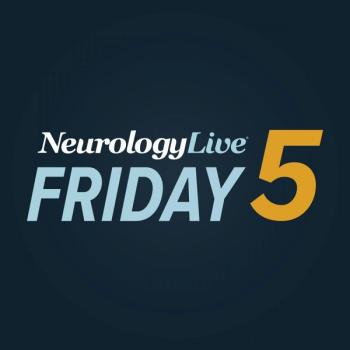
In part 2 of this interview, the vice president of AstraZeneca’s Cardiovascular and Metabolic Diseases portfolio discusses future trials with ticagrelor and when they anticipate a possible FDA approval.

In part 2 of this interview, the vice president of AstraZeneca’s Cardiovascular and Metabolic Diseases portfolio discusses future trials with ticagrelor and when they anticipate a possible FDA approval.

The vice president of AstraZeneca’s Cardiovascular and Metabolic Diseases portfolio discussed the findings of the THALES trial, and how ticagrelor stands alone among stroke treatments.

While further study is required, the data support vigilance of the symptoms and signs of acute ischemic stroke in patients with COVID-19 to reduce the burden of long-term disability.

Neurology News Network for the week ending July 18, 2020.

Neurology News Network for the week ending July 18, 2020.

Take 5 minutes to catch up on NeurologyLive's highlights from the week ending July 17, 2020.

In addition to showing significant and clinically meaningful reduction in acute ischemic stroke and transient ischemic attack, ticagrelor showed a consistent safety profile to what has been observed in previous trials.

Previous exclusions limiting use of the drug in spasticity caused by cerebral palsy have been lifted.

The findings are particularly relevant for prehospital stroke awareness and improvement of in-hospital acute stroke protocols.

Take 5 minutes to catch up on NeurologyLive's highlights from the week ending July 10, 2020.

The FDA has set the Prescription Drug User Fee Act action date for Q4 2020 for the AstraZeneca agent.

Despite the ongoing public health emergency, many of the telehealth policies established by the CARES Act waiver are expiring.

One of the first case-series studies that analyzed children with COVID-19 suggest that SARS-CoV-2 should be considered for differential diagnosis in children presenting with new neurologic symptoms and splenium signal changes on MRI.

Located in the “Stroke Belt” of the US, Virginia presents a unique perspective on the interplay of social, ethnic, and cultural implications on population health.

A look at the questions you should be asking during the decision-making process of picking a telehealth vendor.

Take 5 minutes to catch up on NeurologyLive's highlights from the week ending July 3, 2020.

An NIH-funded study provided supporting evidence of an association between high levels of gram-negative bacteria and a stroke-, seizure-, and headache-inducing vascular abnormality.

Andrew Russman, DO, guest editor for NeurologyLive, provides insight on how stroke care has changed during the COVID-19 pandemic.

Neurology News Network for the week ending June 27, 2020.

Take 5 minutes to catch up on NeurologyLive's highlights from the week ending June 26, 2020.

The findings advance the translation of soft robotic exo-suits from the laboratory to the clinic and may motivate future controlled efficacy trials.

MedRhythms’ digital therapeutic platform serves as a digitized version of rhythmic auditory stimulation that is sensor-automated and music-based.

The “time is brain” mantra continues to drive innovation in a specialty that will not settle for mediocrity.

Take 5 minutes to catch up on NeurologyLive's highlights from the week ending June 19, 2020.

Emphasis on prevention of intracranial hemorrhage at an early stage is recommended to mitigate further risks later in a patient’s life, especially in older individuals.